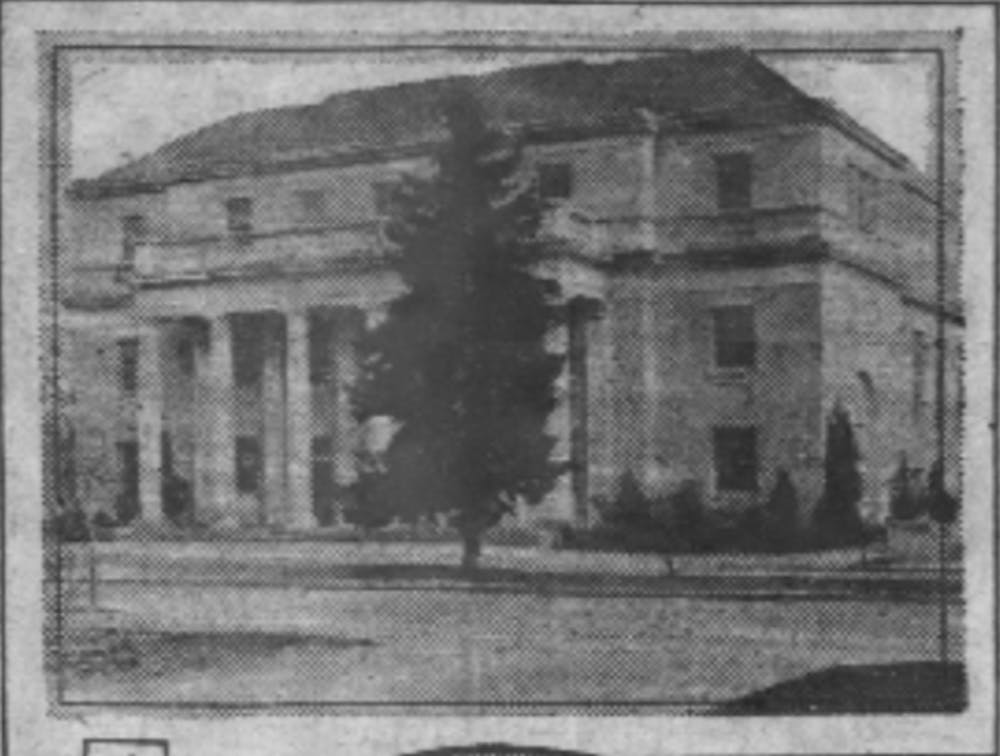While numerous cases of UNC pursuing and selling enslaved people are documented in various archives, the full extent of the University's activity in this area is unknown.
In one case, which former UNC President Kemp Battle wrote about in the early 1900s, a free Black man had a daughter who was “the slave of another” until he bought the rights to ownership of her. Sometime after that, the daughter had her own son.
But when her father died without a rightful heir, “His child and grandchild, being his personal property, became the property of the University.” The Trustees then ordered the two to be sold, a decision that Battle said they seemed to experience no difficulty in deciding.
“It must be remembered that slaves were considered to be as a rule in a better condition than free negroes,” Battle wrote.
Between 1790 and 1840, UNC received an estimated $4 million in current-day value through escheated properties, which was 25.7 percent of its total revenue over that period and more money than it received through tuition fees. Those numbers were reported to the legislature by former Gov. Edward Dudley, according to Robinson’s “Escheats,” though Dudley admitted that it was “impossible ... to ascertain and designate, at present, the various kinds of property received by the Trustees since 1789.”
For the sons of the elite
While the labor and trading of enslaved people was central to establishing and growing UNC, it was also a primary source of wealth for generations of students at the University who would become North Carolina’s future leaders.
UNC was built as an institution for the sons of the elite, said William Sturkey, a UNC historian who specializes in the history of race in the U.S. South.
“There was no G.I. Bill or (federal student aid) in 1860,” Sturkey said. “Those were predominantly students who came from slave-owning families.”
The median student in UNC’s senior class of the 1860 academic year came from a household that owned 19 slaves, according to data compiled from U.S. Census records and other primary sources. The median student’s household owned personal property worth nearly $930,000 in current-day value.
That personal property figure excludes the value of each student’s family real estate holdings at the time. It does, however, include the value of any enslaved people that they claimed ownership of. Multiple historians said slave-based riches likely comprised the majority of these UNC students’ family holdings, and students from the most wealthy families dwarfed the median numbers.
Sturkey noted that these numbers alone may not paint a full picture, as additional slave holdings of the students’ families may exist in Census records from other regions.
To get the day's news and headlines in your inbox each morning, sign up for our email newsletters.
Nearly all UNC students in the class of 1860 came from from a household that reported ownership of at least one enslaved person, just a few years before slavery in the U.S. would be abolished.
Adam Domby, professor of history at the College of Charleston, said these numbers contradict pro-Confederate arguments that Silent Sam is a monument to non-slaveholding members of the Confederate army.
“The majority of soldiers who came from UNC were slaveholders, and were wealthy,” Domby said. “That’s the thing that’s kind of ironic, is that they’ve chosen this monument to make that point, which is the one monument where that point has the least legitimacy.”
A familiar name
Sophomore De’Ivyion Drew was looking through the slaveholding and wealth data for the class of 1860 — distributed by Sturkey in his “Race and Memory at UNC” class, which Drew is enrolled in — when a familiar name caught her eye.
James B. McCallum, an 1860 student, is reported as coming from the household of John McCallum in Robeson County, which owned 17 slaves with a current-day personal property value of over $862,000.
That student also shared a last name with her maternal grandfather, William McCallum, who is also from Robeson County. After a bit of digging, Drew learned that the family line her grandfather descended from most likely has its roots in a man from the McCallum family impregnating one of their female slaves.
Drew said for her, the experience of female slaves in particular is what most disturbs her.
In her research, she has found little to no records of female slaves. Drew said the lack of value assigned to them in comparison to their male counterparts, and the treatment they received because of it, are of particular concern to her.
“There’s a narrative of a sort of consensual and romantic relationship between a slave and a slave owner which, as a Black woman myself, I don’t necessarily subscribe to,” Drew said. “Especially because there is a structural component to the relationship that is inherently immoral and oppressive.”
special.projects@dailytarheel.com



